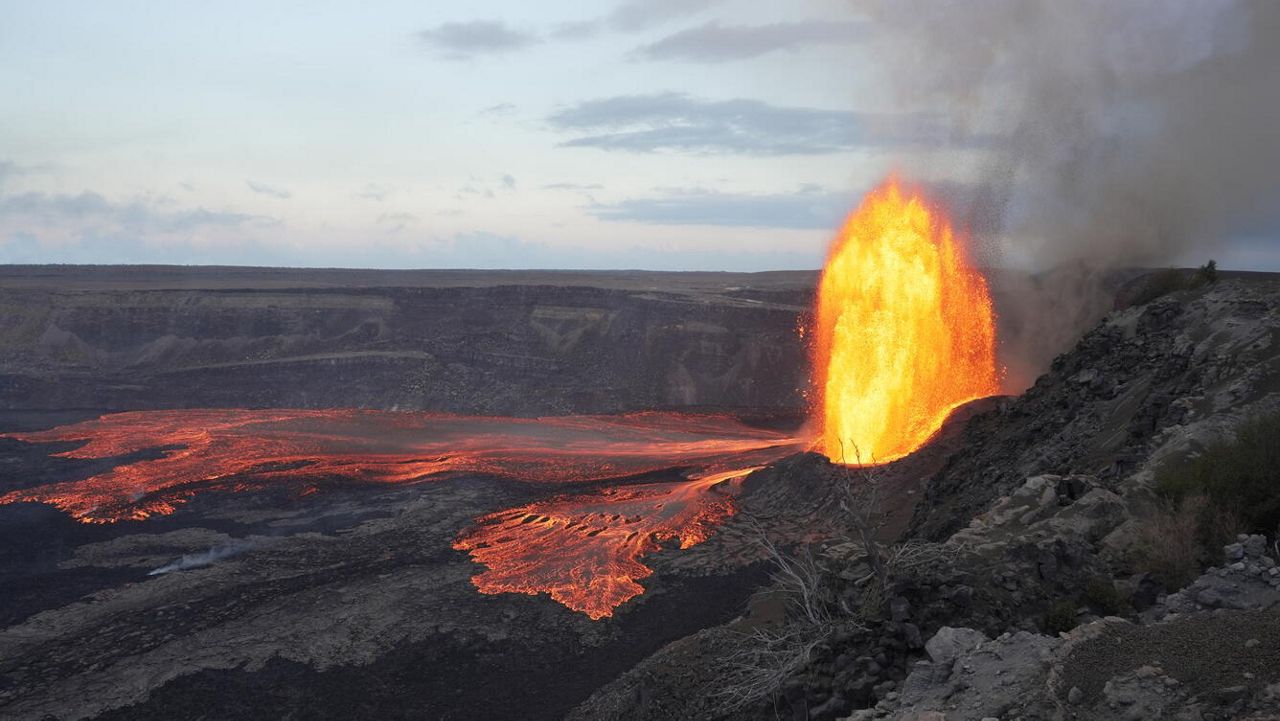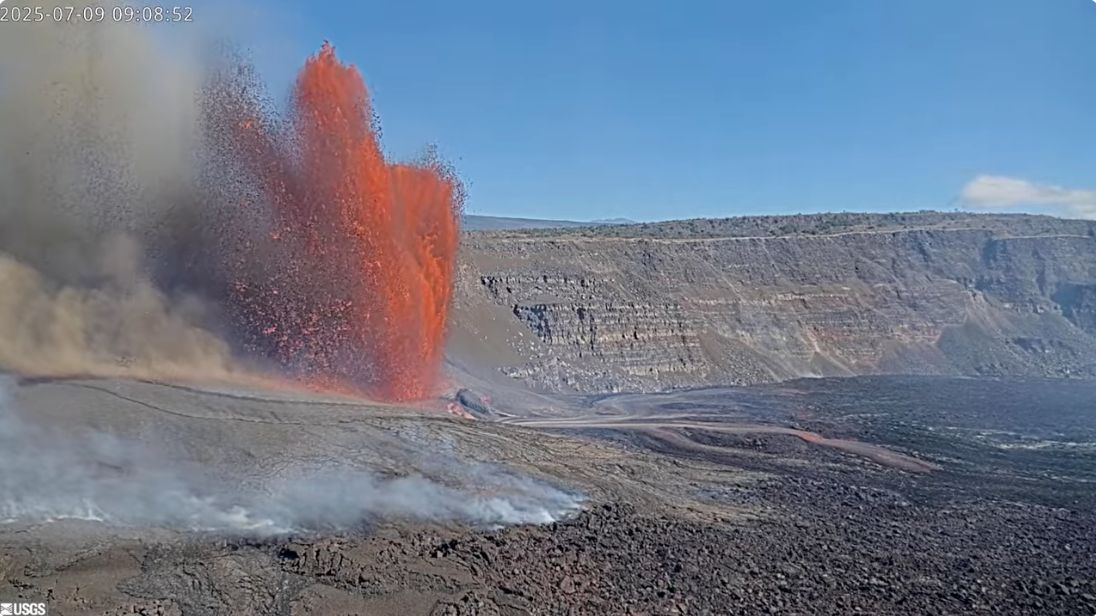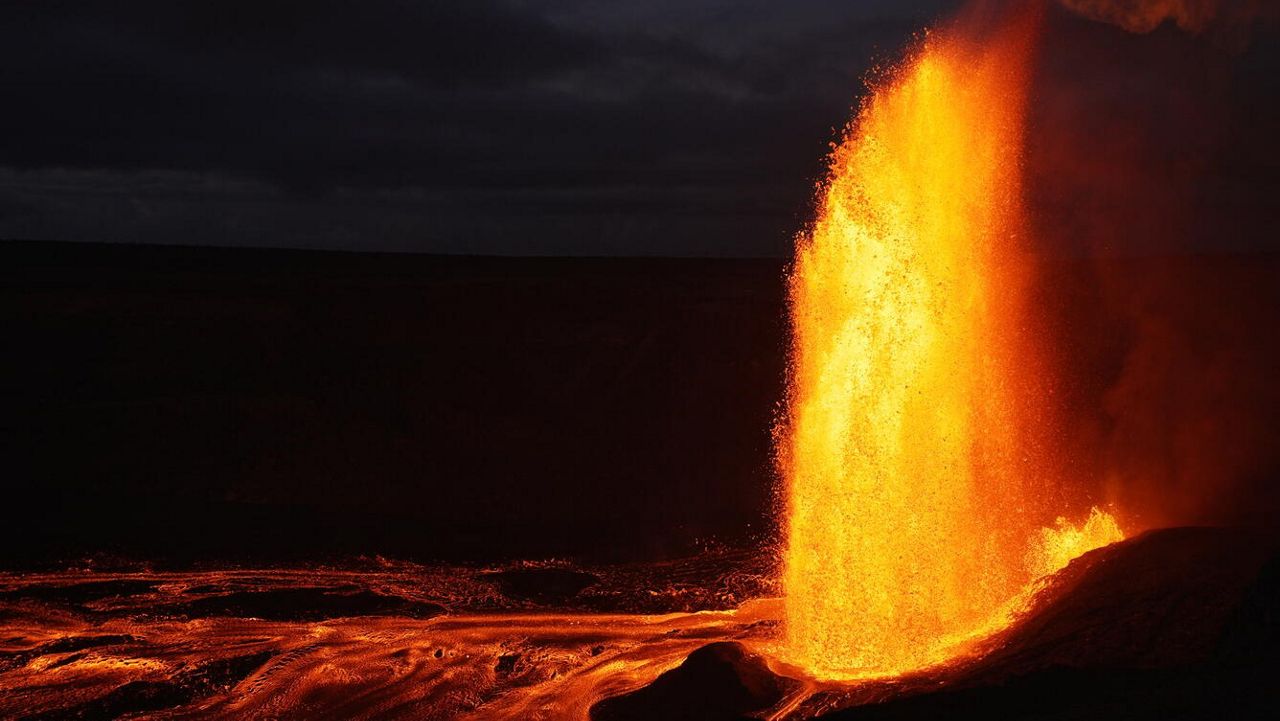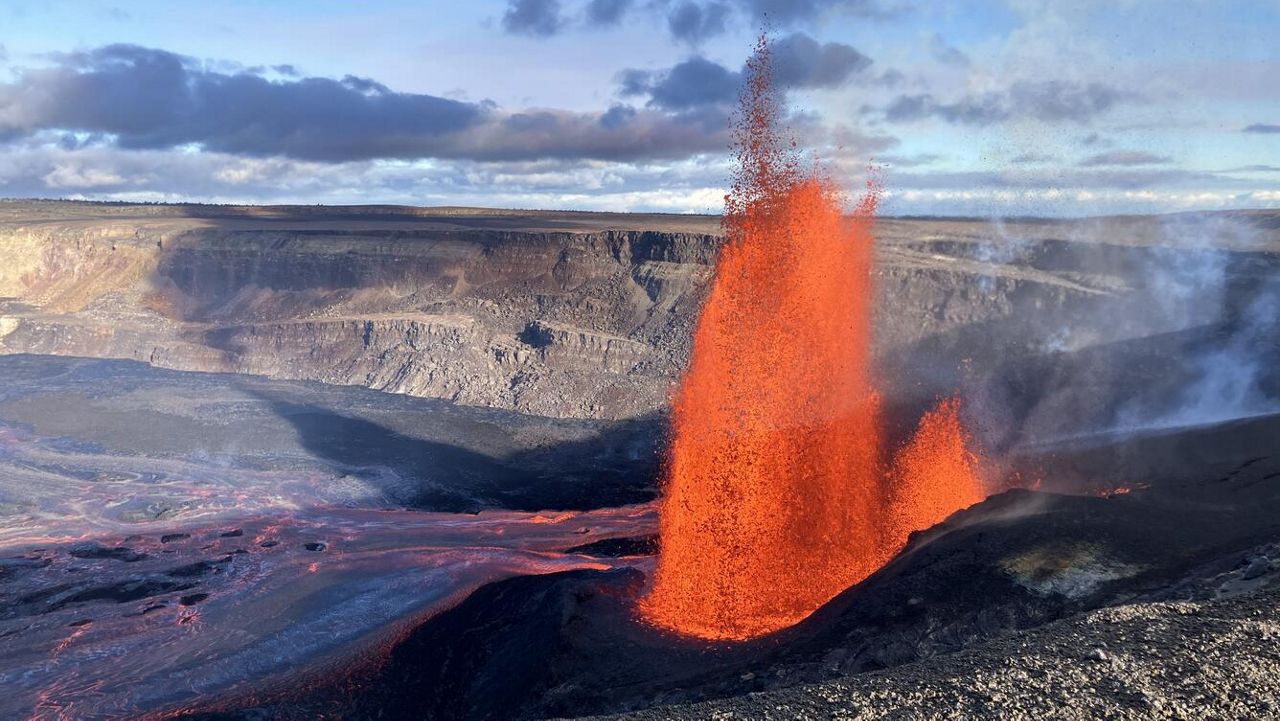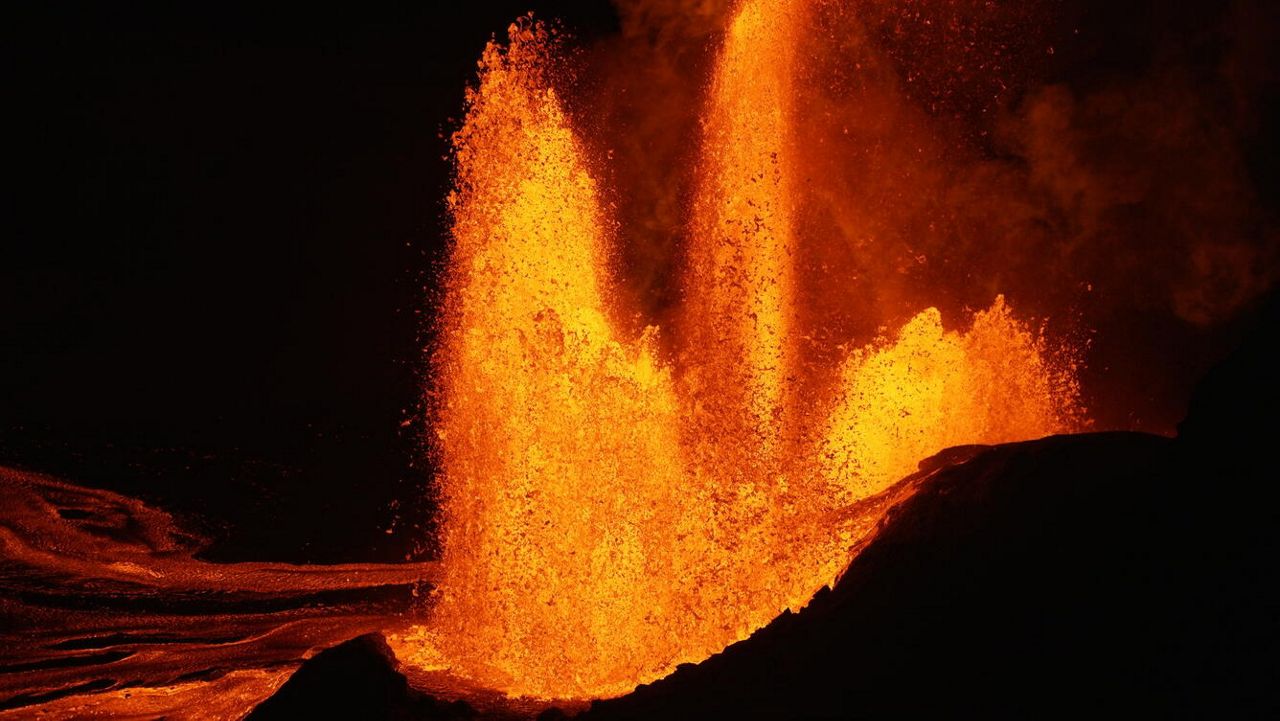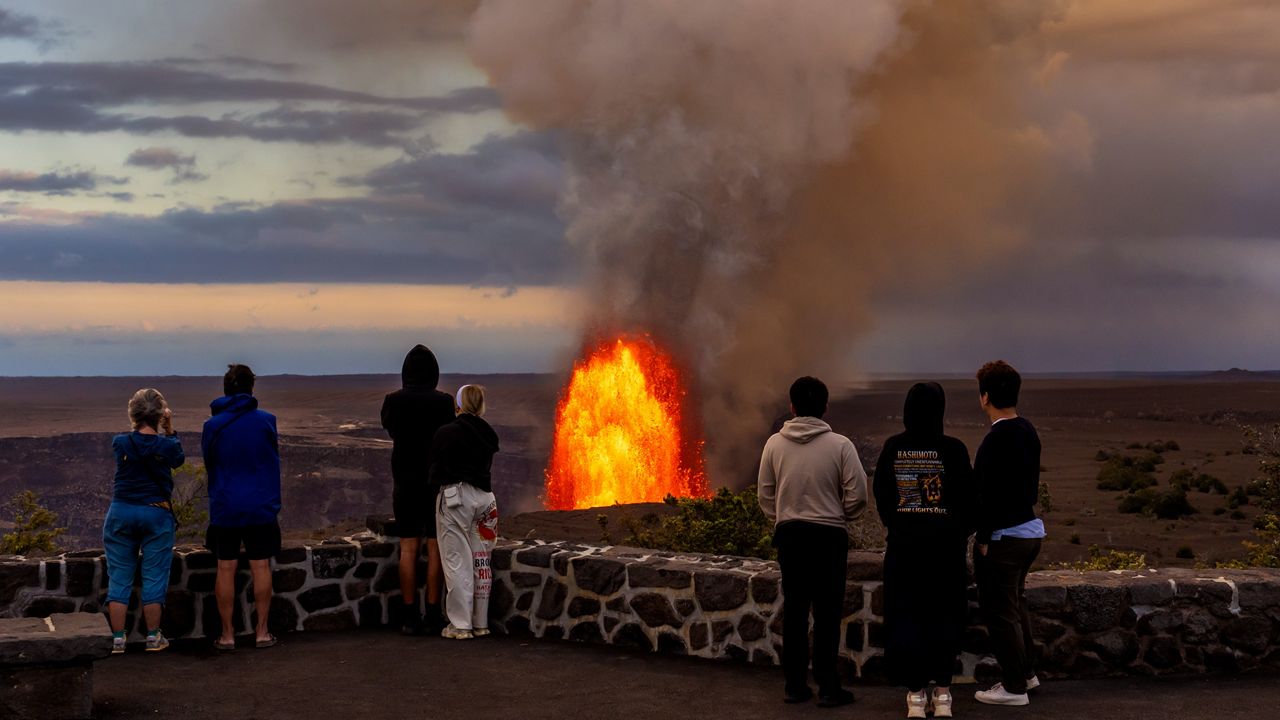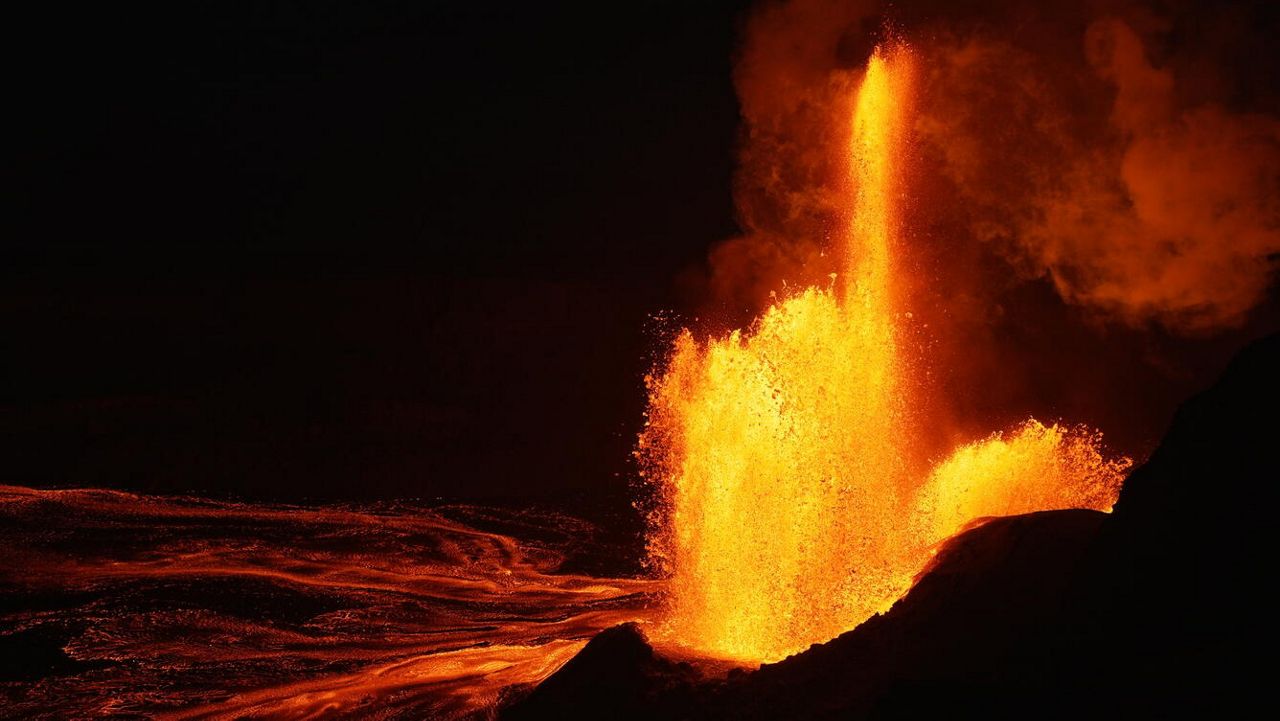The Hawaiian Volcano Observatory reported Kilauea volcano began the main fountaining event of episode 24 on Wednesday at 8:55 p.m. However, the eruption paused abruptly on Thursday at 4:28 a.m.
During the episode, lava fountains reached heights up to 980 feet.
The current eruption, which began on Dec. 23, 2024, has already produced 23 episodes of lava fountaining, each separated by brief pauses in activity. These spectacular bursts of lava originate from two vents within the Halemaʻumaʻu crater: the north vent and the south vent.
On Tuesday morning before episode 24 started, the magma within the north vent went through several cycles of rising and falling, producing sporadic spatter and hydrogen flames, according to the Hawaiian Volcano Observatory.
Episode 24 officially started Wednesday evening with low dome fountaining, which was accompanied by lava flows along the crater floor. Small sustained lava fountains, less than 100 feet high, began erupting from the north vent around 9:15 p.m. Activity increased around 10:10 p.m., when fountain heights grew to 325 feet and by 10:40 p.m. reached over 980 feet.
The eruptive plume was heavily laden with tephra (ash, scoria, and Pele’s hair) and reached at least 16,500 feet above ground level, according to the Hawaiian Volcano Observatory.
The U.S. Geological Survey-operated agency warned that emissions of volcanic gas — a mix of water vapor, carbon dioxide, and sulfur dioxide — may be elevated. As sulfur dioxide is released from the eruption, it will react in the atmosphere to create the visible haze known as vog. Sulfur dioxide emission rates are about 50,000 t/d during fountaining events.
Also, the Hawaiian Volcano Observatory noted visitors to Hawaii Volcanoes National Park and residents of nearby areas should watch out for Pele’s hair and other small fragments of volcanic glass and tephra carried in the plume, as they were during previous episodes.
Michelle Broder Van Dyke covers the Hawaiian Islands for Spectrum News Hawaii. Email her at michelle.brodervandyke@charter.com.
